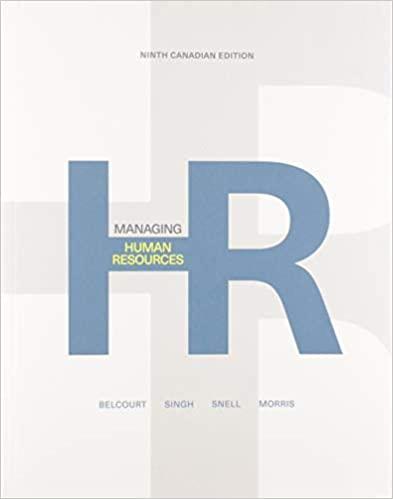There are many different ways in which firms can organize themselves: There are flat organizations and there
Question:
There are many different ways in which firms can organize themselves: There are flat organizations and there are tall organizations. There are organizations structured by products, divisions, and geography. But one thing nearly all structures have in common is a chain of command, or hierarchy. Do companies have to set up that way? Tony Hsieh doesn’t think so. Hsieh is the CEO of Zappos, the online seller of shoes. Hsieh is a guy who thinks outside of the box. When he started Zappos in 1999, no one was selling shoes online. It seemed like a crazy idea—you can’t try on shoes online to see if they fit. But Zappos made the business work by offering good product, free shipping and returns, and great customer service.
Hsieh believes it’s not just the Zappos business model that has led to its success. Employees and their satisfaction are, too. To keep workers happy and passionate about their jobs, the company offers top-of-the-line and unusual perks: good pay, free healthcare, and employees can bring their dogs to work if they are well socialized. Quirky celebrations and parties are the norm at the company, which routinely makes Fortune’s “Best Places to Work” List.
Happy Zapponians and a booming business weren’t enough for Hsieh though. He had noticed that most companies on the Fortune 500 list in 1955 were no longer on it today. In fact, many of them no longer existed. Hisieh figured it was because as firms grow, they become slow and lose touch with their customers. Executives at the top make the decisions, but they don’t really understand what customers want, how products can be improved, or have a lot ideas for transforming the business. Lower-level employees—the people closest to the work—often do, but their suggestions rarely make it up the food chain. He didn’t want that to happen at Zappos. So what did Hsieh do? In 2014, he instituted a new type of self-management system. There are no managers at Zappos anymore. Everyone is an equal, and no one can tell anyone else what to do.
Employees at Zappos don’t have job titles. They have “roles” and their coworkers are their “partners.” They work together in “circles” (or teams) of their choosing. The members of a circle meet regularly to talk about improvements and ideas. A “chit chat” is held at the beginning of each meeting. Everyone is required to speak, which ensures even the quietest employee is heard. A software system then tracks the circle’s goals and who agreed to do what and when. “Really what we’re trying to do is turn each employee into a mini entrepreneur who has the ability to sense ideas and do something about it,” says John Bunch, who oversees the Zappos self-governing system.
There are also no performance appraisals at Zappos. If you’re doing a poor job, your coworkers will let you know. Each employee gets 100 “people points” to distribute to the members in their circles. If an employee doesn’t get enough points, the person may get booted from a circle—like contestants get voted off of the island in Survivor. And if the person has no circle to work in, he or she is out of job. Pay raises are based on new skills a person develops, a system called “badging.” For example, a person might earn a badge for Java coding or merchandising.
If ditching the old corporate structure for something new sounds simple, it turned out to be anything but that for Zappos. First, there were all kinds of rules and meetings required to set up the system: “Tactical” meetings focused on the workflows, and “governance” meetings focused on hashing out processes and eliminating roadblocks. Second, employees had trouble understanding the new system and weren’t sure what they were supposed to be doing. Former managers felt diminished. They no longer had any power or status, and they never would. So much for having climbed the corporate ladder. Writer/editor Roger Hodge referred to the new Zappos organizational structure as “a radical experiment … to end the office workplace as we know it.”
Hsieh knew the transition wouldn’t be easy, so he offered employees who didn’t like the new system a buyout, which amounted to about 5 months’ pay. Eighteen percent of the workforce, or 1,600 employees, took it. Another 15 percent or so quit later. Morale fell, and Zappos dropped off of Fortune’s “Best Companies to Work for List” for the first time in its history.
Does Hsieh have any regrets about implementing such a radical change at an already successful company? No, although he admits he was surprised how hard it was for people to leave their bureaucratic baggage behind. “In retrospect, I would have probably ripped off the Band-Aid sooner,” he says. Employees say Zappos is running more smoothly now and that things improved after their coworkers who didn’t like the system left. The company also implemented a program to better screen and prepare new employees to manage themselves. And reportedly the firm’s profit margins are holding up. Derek Noel, an employee with Zappos, says the new system has let his ideas be heard and allowed him to take on a more substantive role in the company. “My worst day at Zappos is still better than my best day anywhere else,” he says. “I can’t imagine going back to traditional hierarchy anymore.”
Questions
1. Is a self-managing organization a good idea? Why or why not?
2. Could Zappos have done anything to make the transition to the new system smoother? If so, what?
Step by Step Answer:

Managing Human Resources
ISBN: 9780176798055
9th Canadian Edition
Authors: Monica Belcourt, Parbudyal Singh, Scott Snell, Shad Morris





